Related Research Articles

The Long Parliament was an English Parliament which lasted from 1640 until 1660. It followed the fiasco of the Short Parliament, which had convened for only three weeks during the spring of 1640 after an 11-year parliamentary absence. In September 1640, King Charles I issued writs summoning a parliament to convene on 3 November 1640. He intended it to pass financial bills, a step made necessary by the costs of the Bishops' Wars against Scotland. The Long Parliament received its name from the fact that, by Act of Parliament, it stipulated it could be dissolved only with agreement of the members; and those members did not agree to its dissolution until 16 March 1660, after the English Civil War and near the close of the Interregnum.

Marquess of Normanby is a title that has been created twice, once in the Peerage of England and once in the Peerage of the United Kingdom. The first creation came in 1694 in the Peerage of England in favour of John Sheffield, 3rd Earl of Mulgrave. He was a notable Tory politician of the late Stuart period, who served under Queen Anne as Lord Privy Seal and Lord President of the Council. In 1703 this first Marquess of Normanby was further honoured when he was made Duke of Buckingham and Normanby. These titles became extinct on the death of the 2nd Duke in 1735.

Constantine Henry Phipps, 1st Marquess of Normanby,, styled Viscount Normanby between 1812 and 1831 and known as The Earl of Mulgrave between 1831 and 1838, was a British Whig politician and author. He notably served as Lord Lieutenant of Ireland from 1835 to 1839 and as Home Secretary from 1839 to 1841 and was British Ambassador to France between 1846 and 1852.

Ferdinando Fairfax, 2nd Lord Fairfax of Cameron was an English nobleman and politician who sat in the House of Commons at various times between 1614 and 1648. He was a commander in the Parliamentary army in the English Civil War.
Duke of Buckingham, referring to Buckingham, is an extinct title that has been created several times in the peerages of England, Great Britain, and the United Kingdom. There were creations of double dukedoms of Buckingham and Normanby and of Buckingham and Chandos. The last holder of the dukedom died in 1889.
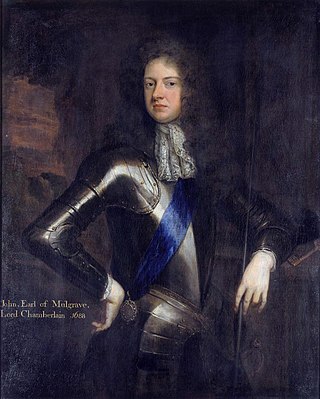
Duke of Buckingham and Normanby is a title in the Peerage of England. The full title was Duke of the County of Buckingham and of Normanby but in practice only Duke of Buckingham and Normanby was used. The dukedom was created in 1703 for John Sheffield, 1st Marquess of Normanby KG, a notable Tory politician of the late Stuart period, who served under Queen Anne as Lord Privy Seal and Lord President of the Council. He had succeeded his father as 3rd Earl of Mulgrave in 1658 and been made Marquess of Normanby in 1694.
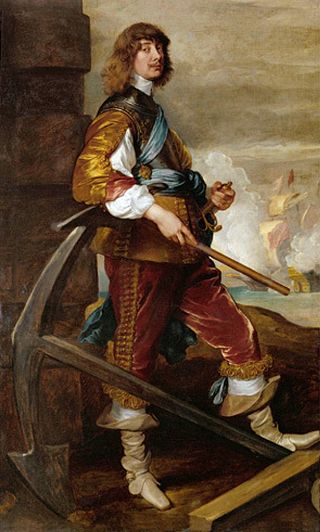
Algernon Percy, 10th Earl of Northumberland, 4th Baron Percy,, was an English aristocrat, and supporter of the Parliamentary cause in the First English Civil War.
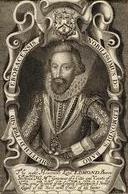
The title Earl of Mulgrave has been created twice. The first time as a title in the Peerage of England and the second time as a Peerage of the United Kingdom.

Sir Hardress Waller was born in Kent and settled in Ireland during the 1630s. A first cousin of Parliamentarian general William Waller, he fought for Parliament in the Wars of the Three Kingdoms, becoming a leading member of the radical element within the New Model Army. In 1649, he signed the death warrant for the Execution of Charles I, and after the Stuart Restoration in 1660 was condemned to death as a regicide.

William Russell, 1st Duke of Bedford KG PC was an English nobleman and politician who sat in the House of Commons from 1640 until 1641 when he inherited his Peerage as 5th Earl of Bedford and removed to the House of Lords. He fought in the Parliamentarian army and later defected to the Royalists during the English Civil War.
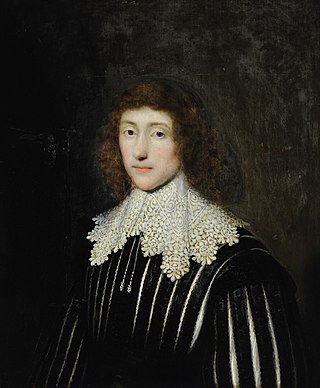
William Cavendish, 3rd Earl of Devonshire, KB, FRS was an English nobleman and politician, known as a royalist supporter.

Philip Sidney, 3rd Earl of Leicester was an English politician who sat in the House of Commons at various times between 1640 and 1659 and became Earl of Leicester in 1677. He supported the Parliamentarian cause in the Wars of the Three Kingdoms, when he was known as Viscount Lisle, a subsidiary title of the Earls of Leicester.
Thomas Wentworth, 5th Baron Wentworth, KB, PC was an English landowner and soldier who supported the Royalists during the Wars of the Three Kingdoms. At the end of the First English Civil War in 1646, he accompanied the future Charles II of England into exile and fought with him at the Battle of Worcester in 1651.
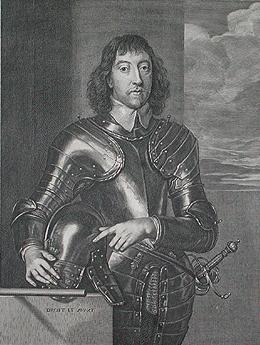
Henry Frederick Howard, 15th Earl of Arundel PC(Ire), styled Lord Maltravers until 1640, and Baron Mowbray from 1640 until 1652, was an English nobleman, chiefly remembered for his role in the development of the rule against perpetuities.

Thomas Fairfax, 1st Lord Fairfax of Cameron MP was an English nobleman, soldier, diplomat, and politician, his title being in the Peerage of Scotland.
Edmund Sheffield, 2nd Earl of Mulgrave was an English peer who supported the Parliamentary cause during the English Civil War period.

Sir William Spring, 1st Baronet was an English landowner and politician. During the English Civil War, he was one of the leading Parliamentarian officials in East Anglia. He was the Member of Parliament for Bury St Edmunds before being removed during Pride's Purge in 1648, but was returned to the House of Commons as the MP for Suffolk shortly before his death in 1654.
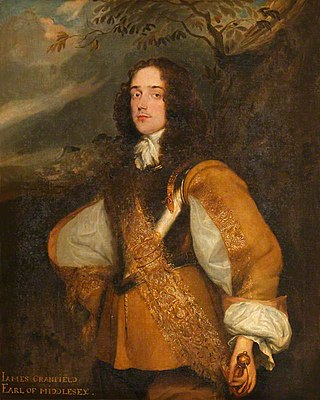
James Cranfield, 2nd Earl of Middlesex, styled Lord Cranfield from 1622 until 1645, was an English politician who sat in the House of Commons in 1640 and inherited his peerage in 1645.

Sir Edmund Wyndham was an Somerset landowner, and Member of Parliament on different occasions between 1625 and 1679. He supported the Parliamentary opposition to Charles I, until 1630, when his wife was appointed wet-nurse to the Prince of Wales.

Catherine Sheffield, Duchess of Buckingham and Normanby, formerly Lady Catherine Darnley, was an illegitimate daughter of King James II of England, and was married to two English noblemen in succession.
References
- ↑ Return of the name of every member of the lower house of parliament of England, Scotland, and Ireland, with name of constituency represented, and date of return, from 1213 to 1874. 2 pt. [and] index. Parliament. 1878. p. 480. Retrieved 12 July 2018.
- ↑ Willis, Browne (1750). Notitia Parliamentaria, Part II: A Series or Lists of the Representatives in the several Parliaments held from the Reformation 1541, to the Restoration 1660 ... London. pp. 229–239.
- ↑ Stuart Asquith New Model Army 1645-60